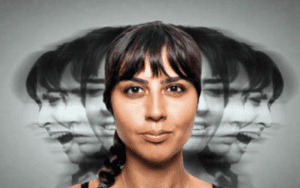As a healthcare professional, you may already have noticed that you’re counseling many more patients with mental health difficulties as the COVID-19 crisis drags on.
People are adjusting to a new and unwelcome way of life overshadowed by a constant threat to health and wellbeing. Health concerns, financial security, isolation measures, and an uncertain future are bound to take their toll.
If you’re a digitally savvy doctor aware that your current and potential patients spend nearly 2 hours a day browsing social media, you’ll wisely decide to share your mental health expertise with a wider audience by writing a blog on the topic.
You need an image to go with that post. So, where can you find images? What should you pick? And why does it matter?
Why the Right Image Matters
You will definitely think carefully about the words that you write in a blog on mental health. You’ll choose a supportive tone, you’ll ensure you’re giving evidence-based advice and you’ll comply with AHPRA’s marketing and social media guidelines.
You may not think as carefully about the image you choose to go with your blog. But you should – and here’s why.
Images have important effects on health communication. Compared to text alone, images used in health messaging can:
- Markedly increase your reader’s attention
- Significantly improve a reader’s ability to remember your words
- Improve understanding by showing the relationship between ideas
- Benefit readers with low literacy skills
- Change people’s adherence to health instructions – though whether the change is positive or negative depends on the emotional response the image generates
Choosing the Right Mental Health Image
Clearly images matter. But how can you depict something as complex as mental health in one photograph?
In 2015, SANE Australia asked 5,000 adults, most of whom lived with mental health conditions, for their thoughts on 7 images depicting mental health. Their findings were published in a report called ‘Picture This: How Australians picture mental illness’.
More recently, Cochrane UK held a tweetchat on illustrating mental health topics, writing up their findings here.
Here are 6 recommendations for your image choices drawn from both groups’ work.
1. Depict hidden adversity
There is often a hidden, internal struggle against anxiety or depression, meaning bosses, colleagues and some friends may not know what the person is really dealing with each day. Images depicting that hidden adversity resonate well.
This image of hidden adversity was seen as the most fair and accurate representation of mental illness among all age groups participating in SANE Australia’s survey.
2. Challenge preconceptions
Many people manage work, family, and community responsibilities alongside managing their mental health condition. Positive images of people engaged in the normal activities of everyday life can help to reduce stigma and normalize the experience of mental illness.So, rather than showing someone buried under their doona and unable to get out of bed, consider showing them engaged in positive self-care such as exercising in a park to manage stress or shift their mood.
3. Portray reality without stigmatizing
That said, it’s important to depict the mentally tough days too. Many people living with mental illness do identify with images showing the darkness, exhaustion, and fear they experience. Be careful here though. Respondents to SANE Australia’s survey were almost evenly divided over whether a picture of someone sitting alone in the dark was an accurate representation of mental illness.
If you’re only using one image, prioritise a positive one. If you have space for two, then you have the opportunity to include a bleak one too, depicting the full range of experience.
4. Avoid triggers
Definitely avoid violent images (knives, blood etc) which are still tagged as ‘schizophrenia’ in some image libraries even if they’re rarely used. This is similar to the guidelines on avoiding triggers in suicide reporting. COVID-19 stress has made many Australians drink more alcohol. If you’re urging people to drink less and find healthier ways to manage anxiety and stress, don’t use images of alcohol next to your post. Your target audience is likely to find this triggers their drinking rather than helps them curb it. After all, images of people smoking undermine advice on smoking cessation.
Instead, make your image consistent with your message. You might show someone pouring a glass of water or de-stressing through yoga.
5. Be inclusive
Australian’s are not all white, young, and pretty. Make sure your blog posts reflect the diversity of your local community.
6. Emphasise human experience
By now, you may be tempted to avoid pictures of people altogether and choose a soothing landscape shot instead. Don’t!
SANE Australia found that most people strongly disliked landscape photography being used to depict mental health struggles. They didn’t find it a fair or accurate depiction of their experience.
If you don’t want pictures of smiling faces, look for other forms of human experience like hugs, hand holding, linked arms, or someone stroking their dog.
Finding the Right Image
How do you find these positive, inclusive, non-stigmatizing, reality depicting images of mental health? There are several online sources to try. But, first, a word about copyright.
Copyright
Tempting as it may be, you can’t simply find, save and use any image you find online.
Copyright automatically belongs to the creator of any image unless they make it freely available or sell it (that’s why your kids’ school photos are yours once you pay up). Online images do actually belong to someone!
That means you either need to apply for permission to use that must-have image or you need to find a royalty-free image to begin with.
Sourcing images
There are a few online libraries where you can get royalty-free images or buy an image for a small fee.
Take a look at:
Tagging images
You need to tag images for a few reasons. It helps readers with visual impairments since the description can be read by software. It keeps Google happy. And, if you tag with diagnostic or emotional terms, it helps people find your post when they’re looking for information on bipolar disorder or loneliness.
How Splice Marketing Can Help
If you’d like help to find or create the right image for your content or social media marketing, we’re happy to design your posts.
Our in-house graphic designer, Emily, does a beautiful job designing graphics that resonate with your target audience and help get your message across.
Please get in touch today.




